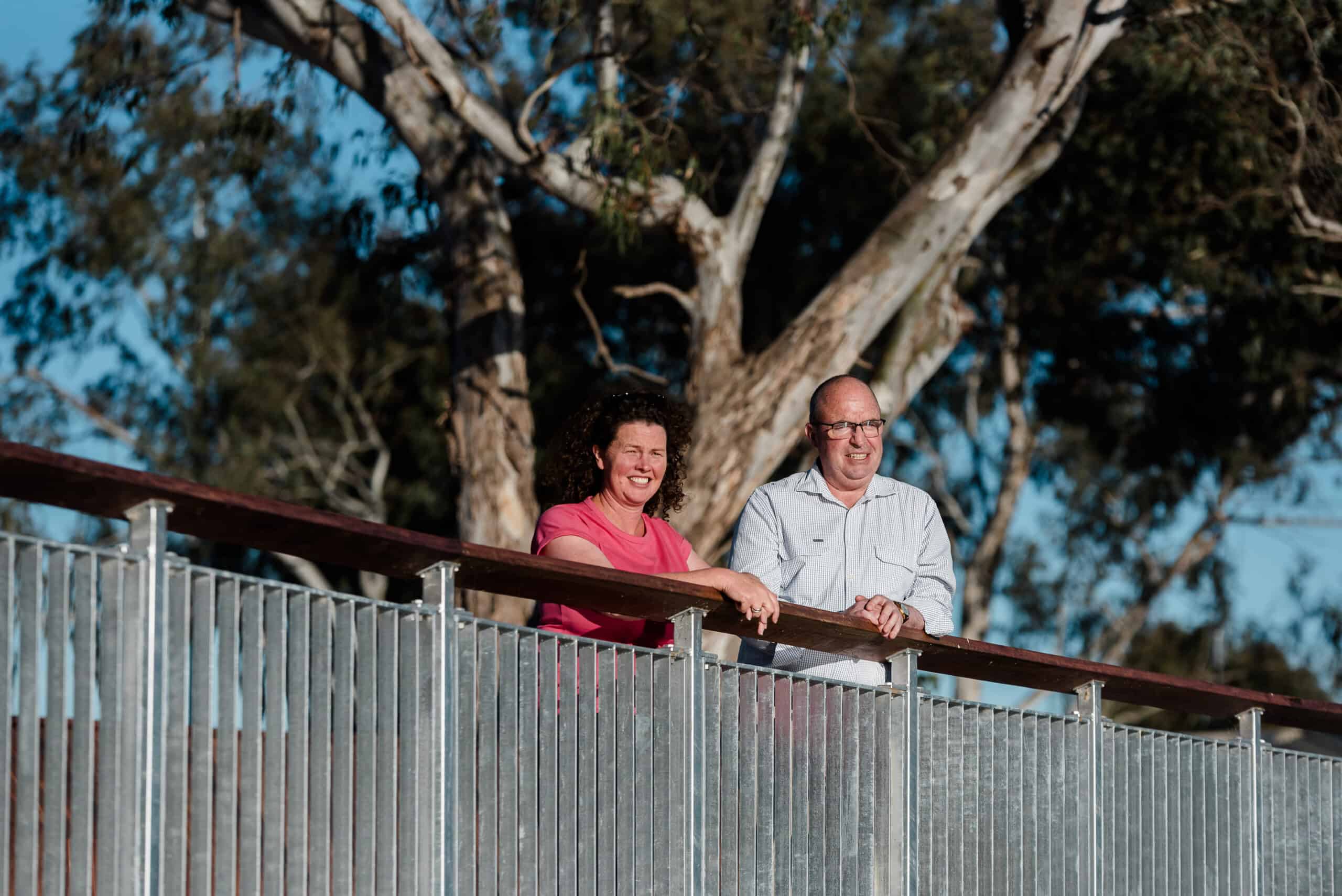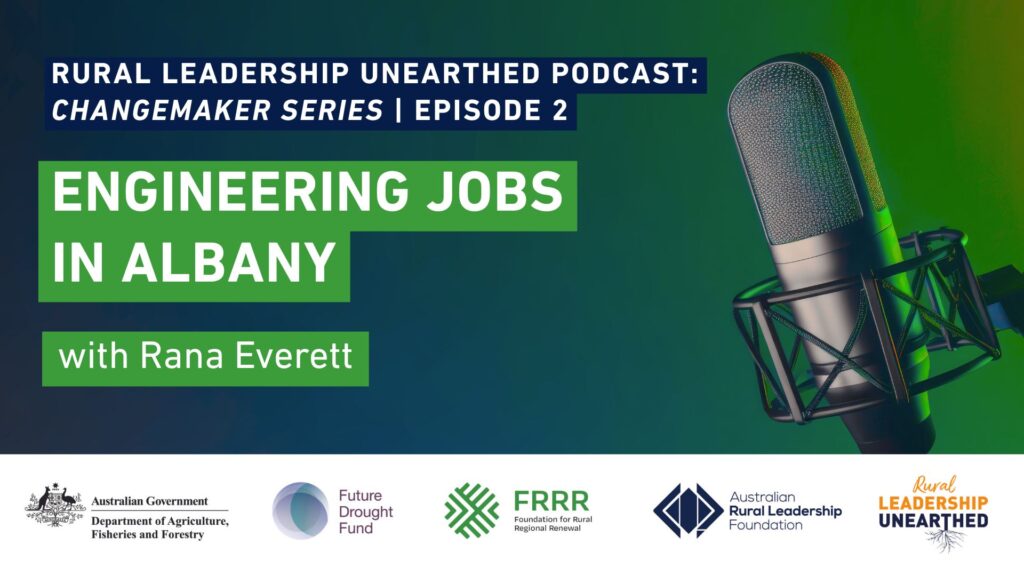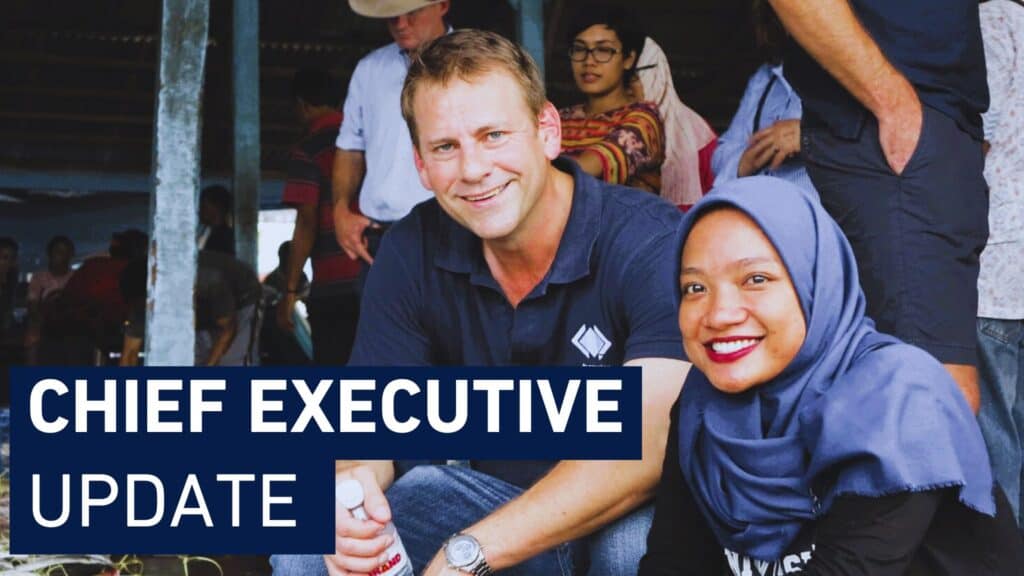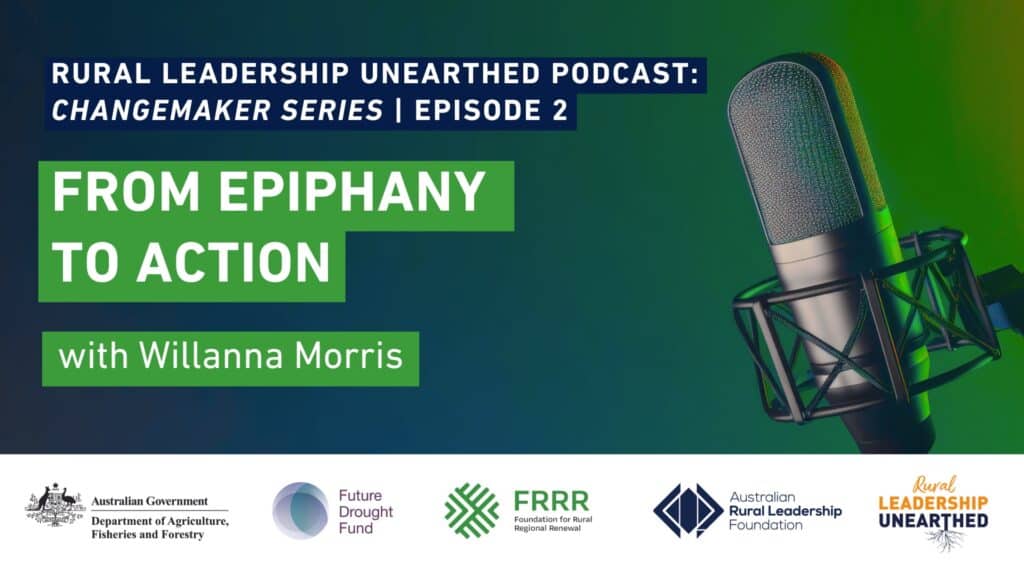A group of Leading Australian Resilient Communities (LARC) graduates from the NSW- Victorian border is taking on a complex issue which threatens their community’s wellbeing.
Through the Bridge the Digital Divide Between Country and City project, the Rivers to the Plains LARC cohort is focusing on digital connectivity, aiming to ensure projects impacting the region allow for access limitations while addressing the region’s expanding digital economy.
It’s part of the LARC program, with the Rivers to the Plains one of ten regions targeted across the country, recognising difficulties endured in the form of drought, floods, and border closures during the pandemic.
Funded by the Australian Government’s $5 million Building Resilient Regional Leaders Initiative – and delivered by the Australian Rural Leadership Foundation (ARLF) in partnership with the Regional Australia Institute (RAI) – LARC aims to support regional communities to meet challenges and collectively drive community resilience.
Operating her own communications business, Upstream Communications, from her Albury home, LARC graduate Julia Brown sees clearly that services in Australia contribute to the digital divide during change.
“…we need to look back and see who is left behind. Rather than leaping from project to project…having forgotten those left behind,” she says.
The LARC working group found a growing gap between urban and rural connectivity, with local Indigenous, migrant, disability, low income, and aged communities most exposed. The situation was exacerbated by rural bank branch closures, the reliance on online employment services, and the need to access services like Telehealth.

The difference between life and death in the regions
Safety and the need for improved digital connectivity is something Moyhu farmer Peter Shanley is extremely aware of. His family has farmed in the region for 160 years, and Peter runs beef cattle on his property about 10km from town.
He’s a volunteer with the Country Fire Authority, the Greta Valley Landcare, and the Soldiers’ Memorial Hall Committee: all outward expressions of his love of place. Known for its natural beauty, the region is a tourism mecca, and the influx of visitors highlights the lack of available housing.
But that is not the only challenge faced. Despite its proximity to Melbourne, not everyone in the region has the same access to digital telecommunication services.
“We have no mobile services, not any, never have had any,” says Peter. “We have a landline, which is okay, but when people try their mobiles and they say, ‘no service,’ they mean ‘no service’.”
A situation that may be regarded as inconvenient to some, has had serious implications for Peter. Crushed by a cow on the farm 18 months ago, he ended up in a Melbourne hospital. Follow up tele-health appointments were scheduled as part of his recovery plan.
His medical team was advised he had no mobile phone coverage; despite this, his telehealth appointments were delivered via that medium until someone removed his mobile number from the system, forcing use of the landline. Peter says it was hard for people to comprehend that while he was living only 30km from the main Melbourne to Sydney thoroughfare, there was no mobile service.
“The lack of connectivity means the community is divided and those without feel like second class citizens,” he says.
He believes both the LARC program, and the project would benefit the community, now and into the future.
“We need leaders who are passionate about what they are on about, and strong enough to keep focusing on it…but not necessarily on how popular they are, or the next election. So many focus on empire building…on being the president of this, president of that…not much of a leader if you are not binding the community together.
“I can only hope they are getting the message out there and creating a bit more awareness. We do have a problem. Not even a third world problem…worse in some regards.”
Peter says the LARC program and project was already having an impact in terms of raising awareness and would have a broad impact on the community.
“Each group is working on a different project…so they are bound to have a positive impact.”

Leadership training…connecting and connections
While Peter’s experience may seem typically Australian, Julia says the LARC project held true anywhere, with regional connectivity a global issue. The project evolved to take on an advisory role, using the group’s circle of influence to speak directly to government, hoping to impact policy. Julia’s involvement with LARC arose from a desire to connect with others.
Having moved to Albury during the Covid lock down, she returned to a place seeped in family and a natural environment she loved. LARC’s greatest strength was the establishment of contacts within the community and beyond.
“I know who to reach out to in my working life, on projects and policy. The connections are in place,” she says.
Before LARC, Julia had led by virtue of being put in leadership positions, but the program provided skills that were useful.
“LARC is bound to have a long-term impact on the community, with people working together and building networks to enable change.
“LARC participants within the room had self-selected. They had already said ‘yes, I am interested in doing this. I am Interested in the contribution I can make’…there was a network of those people to work in that space.”
Learned leadership and change
Shane Sykes is another one of those people drawn to the LARC program by his powerful desire to strengthen community.
Shane lives in Wodonga, Victoria, having moved there six years ago while working with the Federal Government on the Inland Rail project, an initiative delivering a 1,600-kilometre inland railway traversing eastern inland Australia.
The region’s natural beauty, the snow-capped mountains, lakes and the Murray River, and its diversity help keep him in place. Vineyards jostle alongside artisans, and agriculture and engineering provide an economic base to add to the area’s vibrancy.
Shane works with engineering consultancy WSP as a senior associate in communications and engagements. He works in and around transition to renewable energy, designing engagement and communications for external companies, with projects related to infrastructure, disaster relief and the environment, including rewilding.
Shane says that during times of change, communities needed access to accurate information that would help them choose their futures…rather than having change thrust upon them. This is where LARC is important.
Through his roles as a volunteer rural firefighter, helping at an evacuation centre, and with people during times that included Covid, fires and floods, he saw the impact of disaster and unplanned change. He saw clearly that toll dealing with such events had on those who took on leadership roles and realised that there was a need for more people to be able to step up and share the burden.
“One of the reasons I got onto LARC was that I saw people struggling and wanting to help, but they were just burnt out, suffering from vicarious trauma,” he says.
The impact of leadership during disaster was made clear when during the last day of the first intensive of the LARC program, the Murray River flooded.
“People involved in flood response and recovery were immediately using LARC skills,” Shane recalls.
LARC helped him see himself as a leader, not just a facilitator.
“LARC allowed me to give myself permission to lead. Prior to LARC, I would step back and let others lead.
“’Leader’ is not a title; it is what you do. Anyone can lead, at any extent, at any time…if they have the will to do so.”
As someone who has seen how leaders in stressful situations can take on the trauma of others, adding to the burden they already carried during times of trauma, Shane says it was also important that leaders shared their roles.
“True leadership is the ability to step back and recognise there is a job to be done, but that you don’t have to be the person to take the action.”
That is, leading from behind, and supporting emerging leaders, was a characteristic of quality leadership.
Shane adds having LARC trained leaders in the community would have a long-term impact, citing climate change and the fire risk posed by the El Nino as being examples of situations that would involve a response and change, and a need for effective leadership.
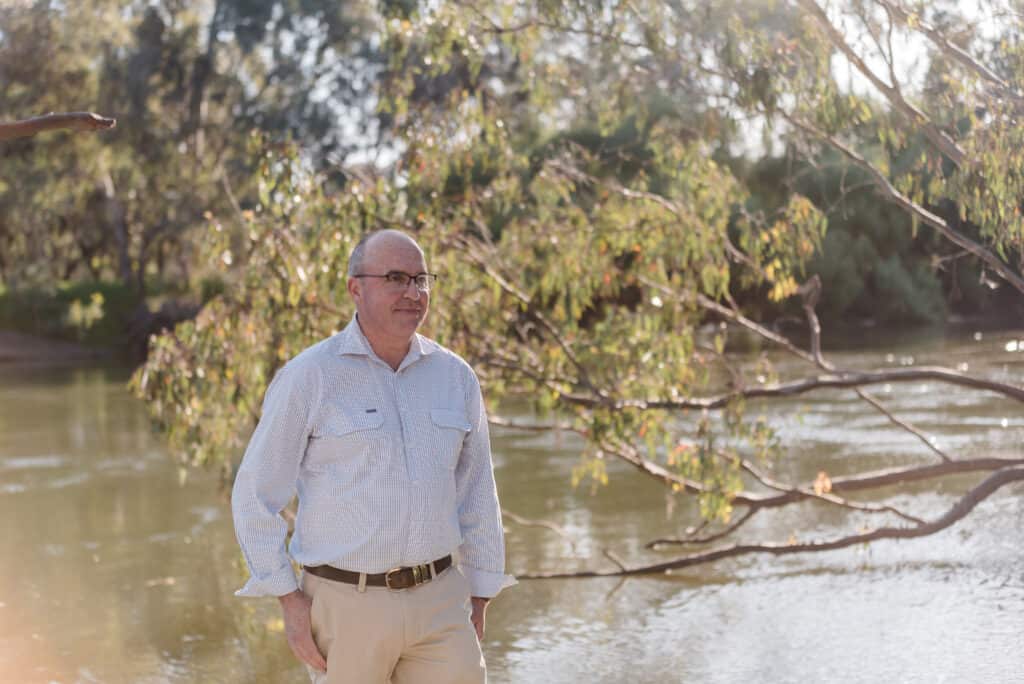
Connections dependent on information
Tom O’Dea is at home on Ngunnawal land in Yass, where he has lived with his family for the last five years. As the NBN Co’s Head of Regional Community Affairs NSW, Tom spends a great deal of his time talking to people in the regions.
He has spent over 25 years in retail, many of them in telecommunications, so the issue of digital connectivity is a subject dear to his heart. As is the concept of community.
When it comes to the issue of connectivity in the regions, Tom has experience and a personal stake.
He says that rather than talk of a connectivity divide, he would go as far as to say that some sectors of the community are simply not included. With the need for multi-factor authentication to access services like MyGov, access is simply not possible for people without digital connectivity. He says the NBN Co spends a great deal of time uplifting digital technology to allow inclusion, but that the provision of information is key.
“Connection is everywhere: we have around 98 percent coverage, but we need to dispel the myths that are impacting on humans.”
He says solutions providing workable telecommunications were available, and that the Regional Tech Hub was able to provide free advice about telecommunications services for regional, rural, and remote Australians.
Tom is aware of the challenges facing rural and regional communities, living in a rural community himself with his partner and young children. They chose the regional centre as a family base because it provided their needs in terms of education and employment and was close to grandparents in Canberra. Tom has been actively involved in community through volunteering, including Caring for Country…adopting and nurturing a patch of bushland near his home.
When asked about challenges that are testing his community’s strength and resilience, Tom points to the lack of affordable housing; the pressure placed on infrastructure and services by the growing population, and the financial stresses on local government, which is ill-equipped to deal with the burden it shoulders.
He says that while money would not hurt in the quest to solve such problems in regional communities, it is leadership that is of value.
“Leadership skills can solve problems locally. When you have leadership skills you know you don’t just have to put up with something…you are equipped and connected and can help solve the problem.”
As an ARLF graduate himself, Tom says he believes that leadership is about being a better person.
“A leader doesn’t just come up with ideas…it builds great solutions on the basis of service. Service leadership services the community. Such leaders say, ‘what can I try to do to make the place I love even better’.”
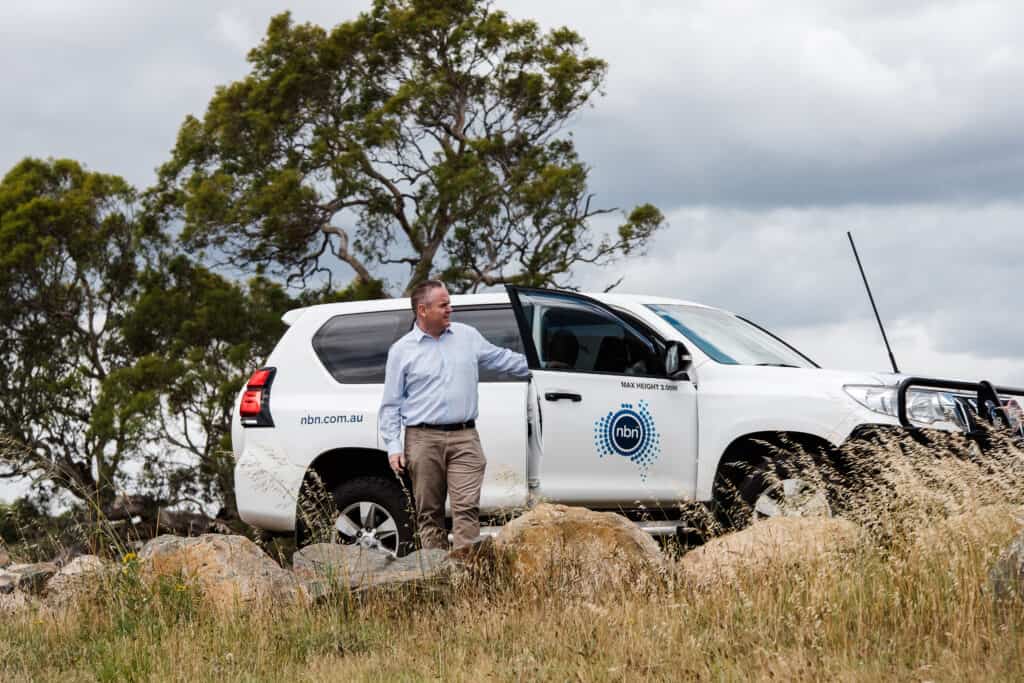
Connectivity, health, and safety in the regions
Improved connectivity, both in the form of digital communications and in terms of human networks, are both outcomes of the LARC Rivers to the Regions program. Program graduates recognised the need for accessible communications to make the lives of people like Peter Shanley safer and comparable to those living elsewhere.
The impact of LARC graduates is recognised outside of their networks, with people like Tom O’Dea and Peter Shanley already seeing the project team fostering discussion around the connectivity issue. But it is the impact of channelling more trained leaders, backed with well-developed support networks, into regional communities that is valued.
“Australia needs more programs like LARC. By increasing the number of trained, local leaders, the trauma suffered by those at the helm of communities in stress would be reduced,” Shane says.
“The diversity of skill sets through LARC helps build stronger communities…communities have been hit, and hit, and with Covid in between, they are still suffering.”
Shane adds local, state, and federal governments are struggling to deliver the support needed by communities, and a varied skill set would help them respond and recover from repeated challenges.
LARC played a role by bringing together people with diverse backgrounds, connecting them, and developing their leadership skills. Those LARC graduates then step back into their communities prepared to lead when needed, and with a support network to provide them with help when needed.
Tom says he could see the flow on impact of the LARC program, which works on training people to be “better.”
“Better people who have the capacity and make time to lead…who have the focus of mind to carve out time to serve and provide leadership in community.”
For Tom, the real value in the LARC program is the encouragement of collaborative leadership: conversations with the right people could speed up resolutions.
“The project is not the important part, it’s the community connections and how they are used,” he says.
Written Dorothy Henderson, photography by Georgie James, videography by Thomas Orchard: a Rural Room collaboration.


